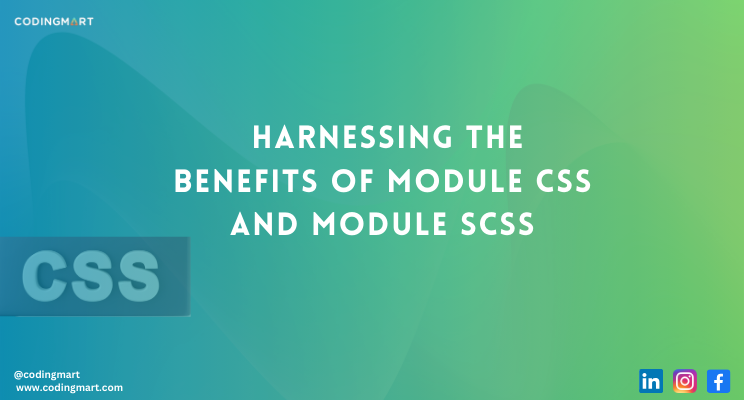blogs
Elevate Your Coding: Benefits of Module CSS & SCSS

Hello FrontEnd Devs and Technophiles,
In the ever-evolving landscape of web development, staying ahead of the curve is paramount. Today, we want to shed light on an aspect that has revolutionized the way we approach styling in web development – Module CSS and Module SCSS. In this edition, let’s explore the advantages of adopting these modular approaches over traditional CSS and SCSS.
Organized and Maintainable Codebase: One of the key advantages of Module CSS and Module SCSS is their modular nature. Styles are encapsulated within specific modules, promoting a clean, organized, and maintainable codebase. This modularity enhances collaboration among developers and simplifies the debugging process.
Scoped Styles for Component-Based Development: Module CSS and Module SCSS allow for scoped styles, making them ideal for component-based development. Styles defined within a module are scoped to that module, preventing unintended style overrides. This ensures seamless integration of components, making it a perfect fit for modern frontend frameworks like React and Vue.js.
Improved Readability and Reusability: By breaking down styles into smaller, manageable modules, developers can enhance readability and promote reusability. These modules can be easily reused across different parts of the application, reducing redundancy and optimizing the overall development process.
Efficient Development Workflow: Module CSS and Module SCSS streamline the development workflow by providing clear separation of concerns. Developers can focus on specific modules without worrying about global style conflicts. This separation accelerates development, allowing teams to work concurrently on different modules without stepping on each other’s toes.
Optimized Performance: Modular stylesheets can be optimized for performance. By including only the necessary modules on specific pages, developers can reduce the overall file size, leading to faster loading times. This optimization contributes significantly to the overall user experience, especially on resource-intensive applications.
Easy Integration with Build Tools: Module CSS and Module SCSS integrate seamlessly with popular build tools like Webpack. These tools can automatically handle the bundling and minification of modular stylesheets, simplifying deployment and ensuring that the production environment is as efficient as possible.
Enhanced Collaboration and Team Productivity: Module CSS and Module SCSS enhance collaboration among developers and designers. With clear module definitions, team members can work simultaneously on different parts of the application without worrying about conflicts. This fosters a collaborative environment, boosting overall team productivity and enabling faster project delivery.
Simplified Debugging and Maintenance: Debugging styles become remarkably easier with modular approaches. In Module CSS, if a style issue arises, developers know precisely which module to inspect, reducing the time spent searching through a monolithic stylesheet. This simplicity in debugging translates to faster issue resolution and simplified maintenance, saving valuable development hours
Flexibility and Scalability: Module CSS and Module SCSS provide a high degree of flexibility. As your project grows, adding new features or components becomes seamless. With modular styles, integrating new elements into existing modules or creating new ones is a breeze. This scalability ensures that your stylesheets remain manageable and adaptable, even as your application expands.
Encourages Best Practices: Adopting modular approaches encourages adherence to best practices in web development. With scoped styles and encapsulated modules, developers are nudged toward writing clean, efficient, and reusable code. This adherence to best practices not only improves the quality of your codebase but also instills good habits within your development team.
Facilitates Theming and Customization: Module CSS and Module SCSS are excellent choices for projects requiring theming or customization options. Modules can be easily customized or extended without affecting the rest of the styles. This flexibility is invaluable for applications where users can personalize their experience, ensuring that design changes are localized and do not disrupt the overall application layout.
Comprehensive Documentation and Knowledge Transfer: The modular structure of Module CSS and Module SCSS naturally leads to comprehensive documentation. Each module can be documented individually, providing clear insights into its purpose and usage. This detailed documentation simplifies knowledge transfer between team members, making it easier for new developers to understand the styling architecture and make contributions effectively.
In conclusion, embracing Module CSS and Module SCSS is more than just adopting a new technology—it’s a strategic decision that positively impacts your entire development lifecycle. From improved collaboration and productivity to simplified debugging and scalability, the advantages of these modular approaches are transformative.
Feel free to share your thoughts on this topic or reach out if you have any questions. Let’s continue our conversation and explore more ways to elevate our web development practices!